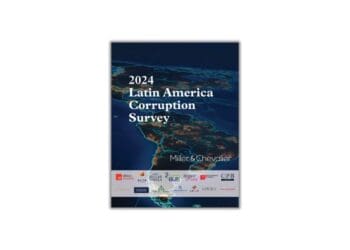The Outlook for AML in the Year Ahead
2018 proved to be a challenging year in the fight against money laundering. Criminals continued to come up with schemes to hide and cash out on their dirty money. With new legislation and technology to help uncover these schemes, will money launderers meet their match in 2019?
As the dust settles on what was another challenging year in the fight against money laundering, 2018 will not only be remembered for a number of high-profile cases, such as the Deutsche Bank Scandal, but also for a shift in the way money is laundered. From new cryptocurrencies and peer-to-peer marketplaces such as Airbnb and Uber, criminals are always looking for new ways to clean their ill-gotten money.
According to the 2018 Mid-Year Anti-Money Laundering Review and Outlook by Debevoise & Plimpton, financial regulators around the world imposed more than $1.7 billion in fines related to anti-money laundering (AML) compliance failures in just the first half of 2018, nearly matching 2017’s annual total of $2 billion.
So, what can we expect in 2019?
On the dark side:
- The bad guys will continue to lean on technology to conduct their schemes and direct money to criminal organizations to finance narcotrafficking, human trafficking and terror attacks.
- Our ever-expanding digital world will continue to open new avenues for criminals to launder their money in different and creative ways. Last year, we witnessed an increase in the exploitation of peer-to-peer marketplaces, where money launderers took advantage of its ease of use and huge global adoption to hide in plain sight among thousands of users.
- The increase in connected devices will give criminals even more communication options and a better chance to hide their activities. Experts predict that there will be more than 50 billion connected devices across the world by 2020.
- Social media scams will continue to be an attractive avenue for money launderers. In this scheme, scammers approach young bank account holders with images of people enjoying expensive lifestyles and get-rich-quick schemes in an attempt to use them as money mules.
On the bright side:
- Governments around the world will start focusing on asset seizure and going after physical assets — such as cars, property and boats — that have been procured with illicit funds. A prime example is the U.K.’s Unexplained Wealth Order implemented in January.
- We expect to see a massive clampdown on finding assets linked to corruption. Governments will go after major proceeds of crime that are linked to corrupt politicians.
- In the coming year, we will see greater collaboration between non-governmental organizations (NGOs), law enforcement and businesses to ensure corporate and social responsibility. As organizations embrace an ethical stance and invest in ethical programs, we will see it become increasingly difficult for organizations to launder money.
- Fraud and AML will continue to merge into the wider market in 2019. We can expect to see this shift mirrored internally within banks, with AML and fraud departments beginning to work together more.
- Just as the bad guys will lean on technology to improve their criminal intensions, so too will forward-looking institutions. With artificial intelligence (AI), it is now possible to comb through more data faster than human counterparts, making it possible for banks and other entities to find out more about criminal networks than ever before. It can also make links between transactions and parties, across internal and external third-party data sources. This develops a single, holistic view and helps paint a clearer picture of what criminals are up to.
Money laundering has been around for a long time. Each year, criminals come up with new and oftentimes ingenious ways to hide their money. Unfortunately, many of the systems used to fight this crime simply aren’t sophisticated enough to keep up. The good guys must lean on technology like AI and big data analytics to gain a full view of their customers and identify suspicious or illegitimate transactions consistently and accurately among thousands of legitimate interactions that happen each day.



 Alexon Bell is a hands-on AML practitioner with over 16 years of experience helping financial institutions with AML strategies, architectures and implementations. He has a wealth of experience in helping customers deploy and crucially optimize AML, KYC and sanctions screening solutions, having held leadership roles at Actimize (Fortent), SAS as EMEA/AP Head of Compliance Solutions and Oracle. As a thought leader, he works with banks to help them tackle the latest emerging threats, ensure coverage and prepare for new regulation in the fight against organized crime and terrorism.
Alexon Bell is a hands-on AML practitioner with over 16 years of experience helping financial institutions with AML strategies, architectures and implementations. He has a wealth of experience in helping customers deploy and crucially optimize AML, KYC and sanctions screening solutions, having held leadership roles at Actimize (Fortent), SAS as EMEA/AP Head of Compliance Solutions and Oracle. As a thought leader, he works with banks to help them tackle the latest emerging threats, ensure coverage and prepare for new regulation in the fight against organized crime and terrorism.






